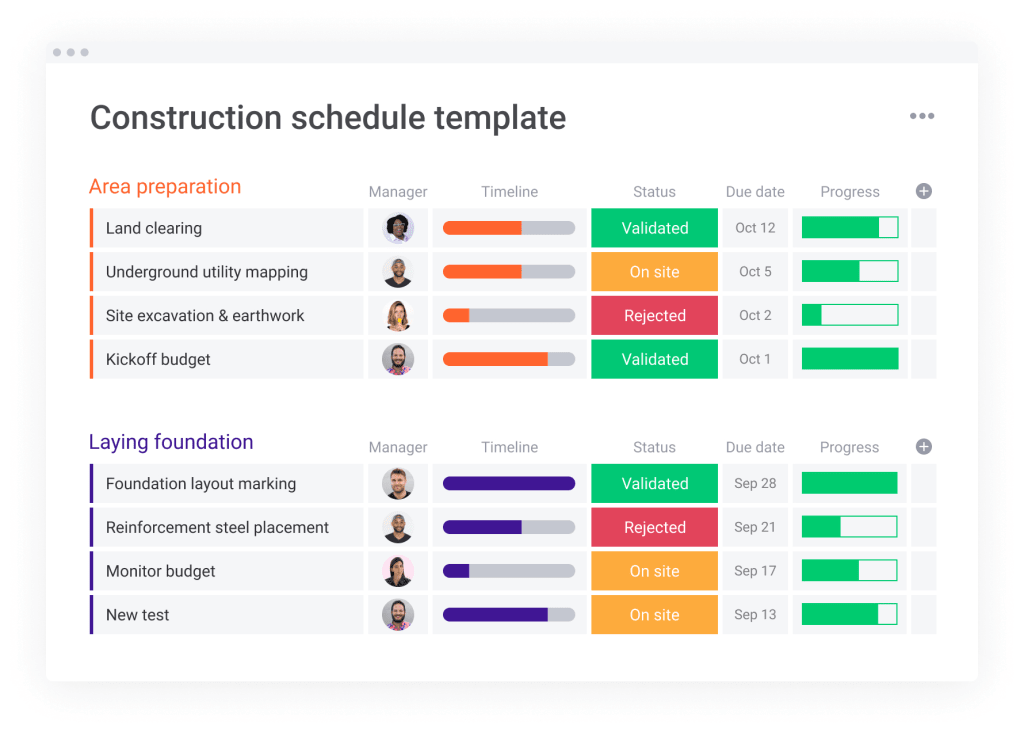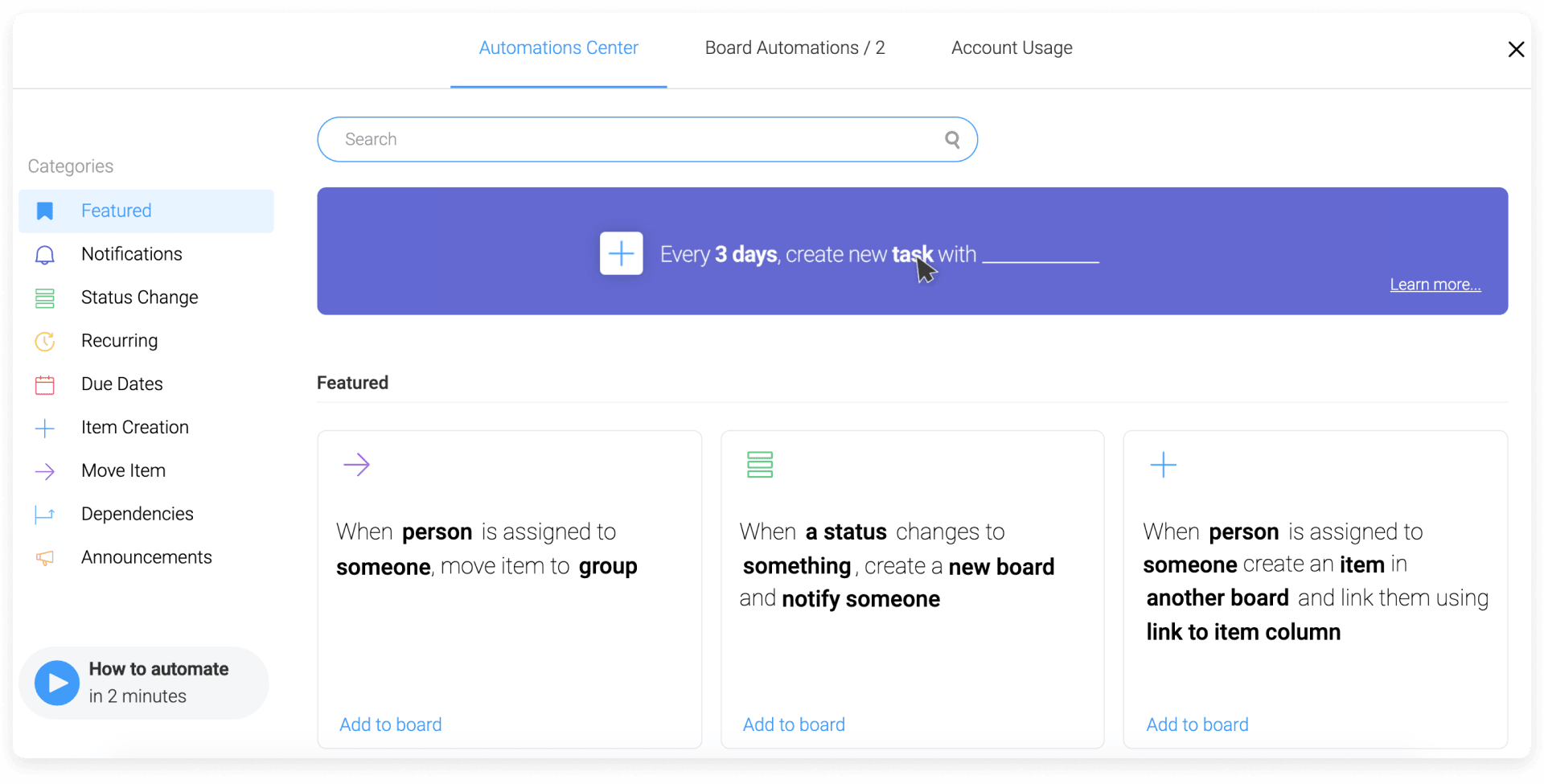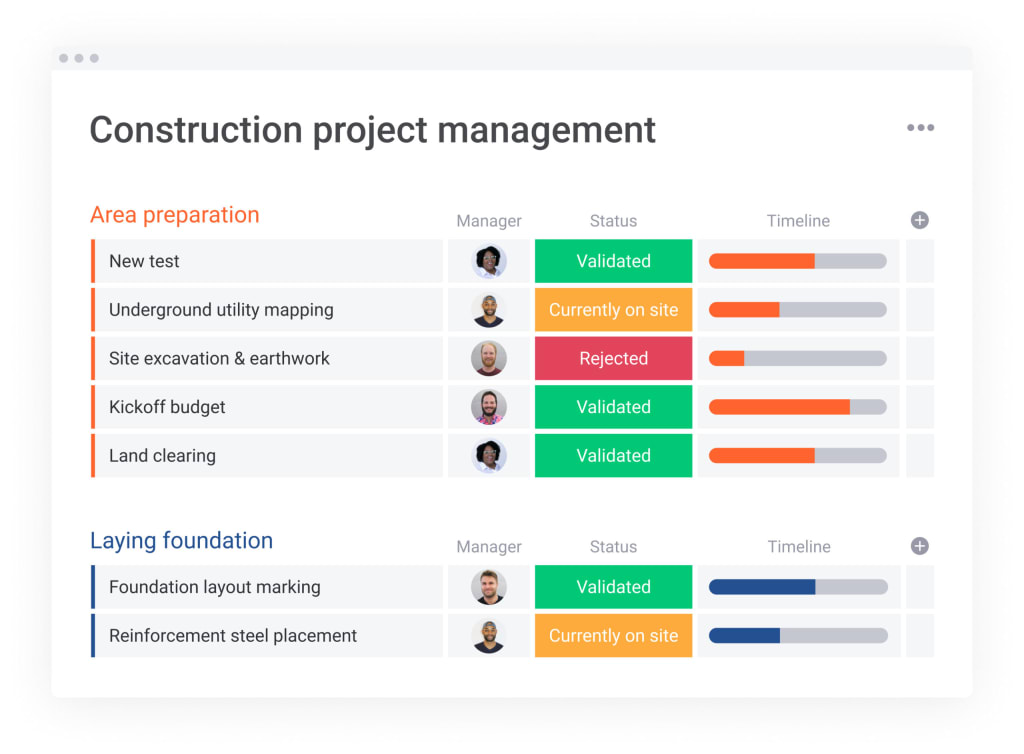The construction process isn’t just how you build something, It’s all the steps involved around the building of something.
From site choice to final inspection (and all the thousands of conversations with contractors and stakeholders in between), the construction process covers far more than the actual construction phase itself.
The construction process is long and complicated, requiring you to organize multiple contractors, expensive and dangerous equipment, a large building site, the owner (who just wants to wear the hard hat and nod appreciatively at blueprints), and a timetable you were never happy with in the first place.
Bringing everything together can be like trying to conduct an orchestra. Get it right and the music is beautiful. Get it wrong and you’ve got a bag of screeching cats.
Management platforms can help tame the chaos and bring organization to all of the moving parts.
This article will guide you through the construction process and how you can use online workflow platforms to make beautiful music (and avoid going over budget and over time).
What is a construction process?
You get the bid, you follow the plans, you finish the job. What’s the big deal about a construction process?
It all boils down to having a plan vs. following the plan. You wouldn’t throw your blueprints in the trash with a shrug and say, “Yeah, I think I got the gist.”
Following the plan makes for a faster and less costly build.
You can break it down into 6 main parts:
- Conception
- Design
- Pre-construction
- Procurement
- Construction
- Post-construction
The process makes sense if you take it one step at a time. But organizing (and seeing) it all in one place is essential to not getting overwhelmed or losing the forest for the trees.
That’s where digital workflow platforms come in.
What are the 6 steps of a construction process?
Think of the 6 steps of a construction process as file cabinets. Each cabinet holds a few folders.
In the same way, each step of the construction process has many smaller steps within it.
Let’s break them down.
1. Conception (aka planning and development)
Planning and development, sometimes called project conception, is the very beginning of the construction process.
This is when a client dreams up the building or facility they want.
Conception is the stage where ideas are at their most fluid, but (maybe paradoxically) it also creates the foundation of the construction process.
Everything must be done with care to ensure a successful build later.
Parts of this step include finding a property for the build, initial concept pre-designs, and choosing an architect and possibly a general contractor.
2. Design
The design process is where the impossible (or at least impossibly expensive) dreams of your client meet what is actually doable.
Once you’ve somehow managed to be realistic without shattering your client’s hopes and dreams, plans or a design get drawn up. For the first time, you get to see what the project will look like when it is finished… after you meet one more round of challenges.
Like the 12 labors of Hercules, you still have hurdles to clear.
After a preliminary design is drawn up, you have to overcome additional restrictions and regulations to meet the client’s “extra” ideas. For example, green certification standards for a green building.
In the last three years, 56% of builders have registered projects with the US Green Building Council (USGBC) or Leadership in Energy and Environmental Design (LEED).
Once you’ve finally completed bending the rules of reality to bring your client’s dreams to life in the final plans, bid materials are put together.
Those bid materials are sets of information called contractor documents (sometimes construction documents or working drawings) that give contractors and construction companies the information they need to bid on the project.
3. Preconstruction
Now we enter preconstruction. This is the “getting ready to start building” phase.
You’ve accepted a bid from a construction company or contractor and told them to start the project. Now, the general contractor starts getting their ducks in a row.
The general contractor’s ducks are called a project management team.This project team includes:
- A contract administrator — Makes sure that the project manager and superintendent have the right information about the construction contract.
- A project manager — The head duck of the construction project management team. Could be called a construction project manager or construction manager.
- A superintendent — Coordinates all construction activities on-site as well as the time schedules for work and deliveries of materials/equipment. Generally lives on coffee and cigarettes.
- A field engineer — Manages and coordinates site inspection, environmental site issues, and historical and archaeological site issues. The field engineer makes sure safety and regulations are followed as the project progresses.
Keeping the project management team together has to happen for your construction project to succeed.
In this stage of the process, construction platforms that help team members collaborate easily and coordinate schedules are extremely helpful and save time.
For instance, monday.com’s shared calendars enable every member of your construction management team to see each other’s schedules and arrange meetings appropriately:

4. Procurement
Next is procurement which is the most straightforward step in the construction process.
Procurement is simply the buying (or renting) of all the stuff needed for the construction project.
Like shopping for groceries for cooking a meal, you need all the ingredients and someone to use the ingredients.
In construction, that means finding the labor, equipment, and building materials.
This is where schedules can really get tied in a knot. You have a lot of varied delivery schedules and a lot of vendors you need to juggle so that the right materials get into the right people’s hands at the right times.
5. Construction
Alright, are we ready to actually build something?
Time to dig in the dirt, pour some concrete, bend some rebar, and fire up the welder. Now the project finally moves from paper (or more accurately, a CAD drawing) to the physical world.
But, this step has the most working parts and deadlines to coordinate. Each contractor and subcontractor involved must be on time and following plans for things to work.
Organization and communication are vital here, or you might have someone building a roof before the foundation is poured.
It’s in the construction stage that we really push our clients to use digital process management tools.
Creating project workflows for each team and stage of the process is essential, but (when you have as many dependencies as you do in the construction phase) it’s even more necessary to keep everything working smoothly.
Here’s a glimpse at monday.com’s construction schedule template:

6. Post construction
Everything is built but you aren’t done yet. Now you have to inspect everything. The final checklist, called a project punch list, has to be signed off on before the client moves in.
That final walkthrough inspection checks that everything was finally finished correctly. Then, the architect issues a certificate of substantial completion.
But wait, there’s more!
Now, the government officials get in the act and everyone bites their nails as the final government inspection is done.
Only once that final government inspection is complete are you really done. Time to shut it all down and send everyone home.
Organizing the construction process
The construction process is complex.
Not so long ago (even today, within some companies) it meant truckloads of paperwork, hundreds of phone calls, messengers to worksites, and lots of chasing problems after they happened.
Work management platforms can help keep everyone on the same page from any location.
Desktop and mobile apps help make sure that every team member is always in touch, even when on the jobsite.
And online templates can help you get set up and started quickly.
monday.com’s construction schedule templates are a good example of this. The templates give a basic outline of the steps to be completed and can be customized to fit your project.
From large, high-level boards (such as the 6 steps of the process) to subsections for each step, every team member can stay organized and connected.
And using monday.com’s automation tools to automatically move your team through the process reduces your time investment.

For example, let’s say you have concrete due on Tuesday, and your concrete guy is waiting on notification of delivery before they dispatch to your worksite.
As soon as you or a team member logs the arrival of that concrete, the workflow springs into action to notify the subcontractor to get to the site.
It’s as easy as that.
Conclusion
Brick by brick may be how a wall is built, but the construction process is more like juggling bricks.
Team members must be in constant contact and working together seamlessly across an intricate group of tasks and deadlines.
Our templates can help organize all the moving parts with schedules, automation, and communication to simplify the process. Get started today with monday.com’s construction project management templates.

